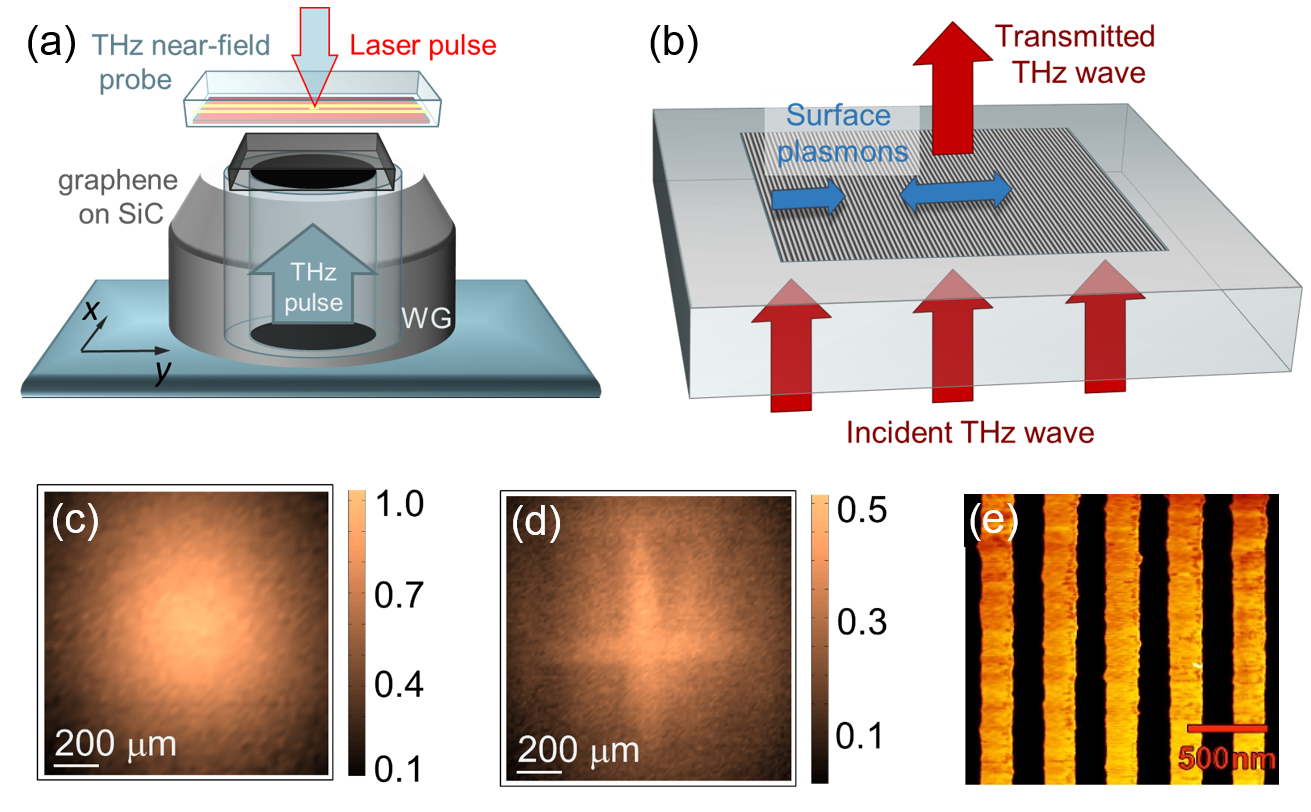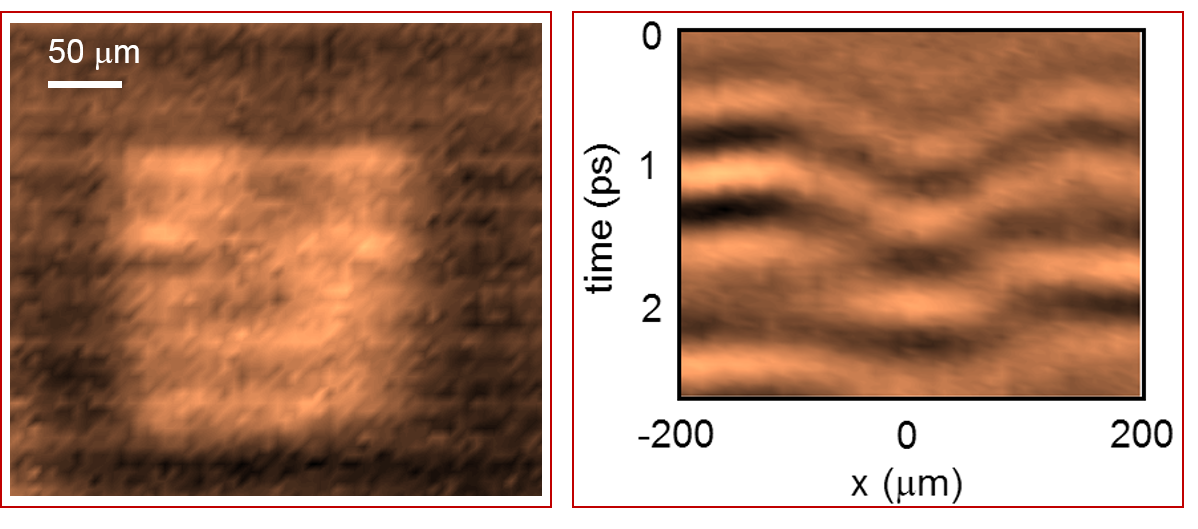|
|
|
|
Probing terahertz surface plasmon waves in graphene structures |
Ultrafast Laser Laboratory Department of Electronic and Electrical Engineering |
|
Graphene and its nanostructures have recently emerged as a promising platform for next-generation opto-electronic devices. In the terahertz (THz) frequency range in particular, the electro-magnetic response of graphene nano-structures is continuously tuneable by varying the carrier density and the structure size. Surface plasmons are in the core of these effects. THz near-field microscopy allowed us to probe THz surface waves in graphene for the first time, opening doors to investigations of surface plasmon phenomena in structures made of graphene. |
|
TRANSMISSION-MODE NEAR-FIELD TERAHERTZ IMAGING OF GRAPHENE Due to their confined nature, surface plasmon modes require near-field high-resolution THz imaging for their direct experimental detection and investigation. Using the THz near-field microscopy system developed at the Ultrafast Laser Laboratory and epitaxial multilayer graphene samples fabricated by our collaborators at Georgia Tech and Sandia National Laboratory, we observed excitation of THz surface waves in graphene. Near-field investigations of graphene ribbon arrays revealed that the THz field in proximity of the arrays can be either reduced or enhanced, depending on the orientation of the ribbons with respect to the polarization of the THz wave and the array periodicity. This effect can be used in a range of THz nano-plasmonic devices from tuneable THz filters for THz communications to graphene-based THz sensors. |

Terahertz near-field microscopy of graphene: |
|
CARRIER DENSITY DISTRIBUTION and SURFACE WAVE SIGNATURE The near-field microscopy method also showed that local THz transmission properties vary significantly on the sub-wavelength scale. The left image displays a transmission map of a graphene mesa. The variation indicates non-uniform carrier density distribution in the mesa. Excitation of surface waves at the mesa edges is shown in the right image, which displays a space-time map of the detected field. |

Terahertz near-field maps: |
|
Read more (Open Access) in |
University College London - Gower Street - London - WC1E 6BT - ![]() +44 (0)20 7679 2000 - Copyright © 1999-2013 UCL
+44 (0)20 7679 2000 - Copyright © 1999-2013 UCL